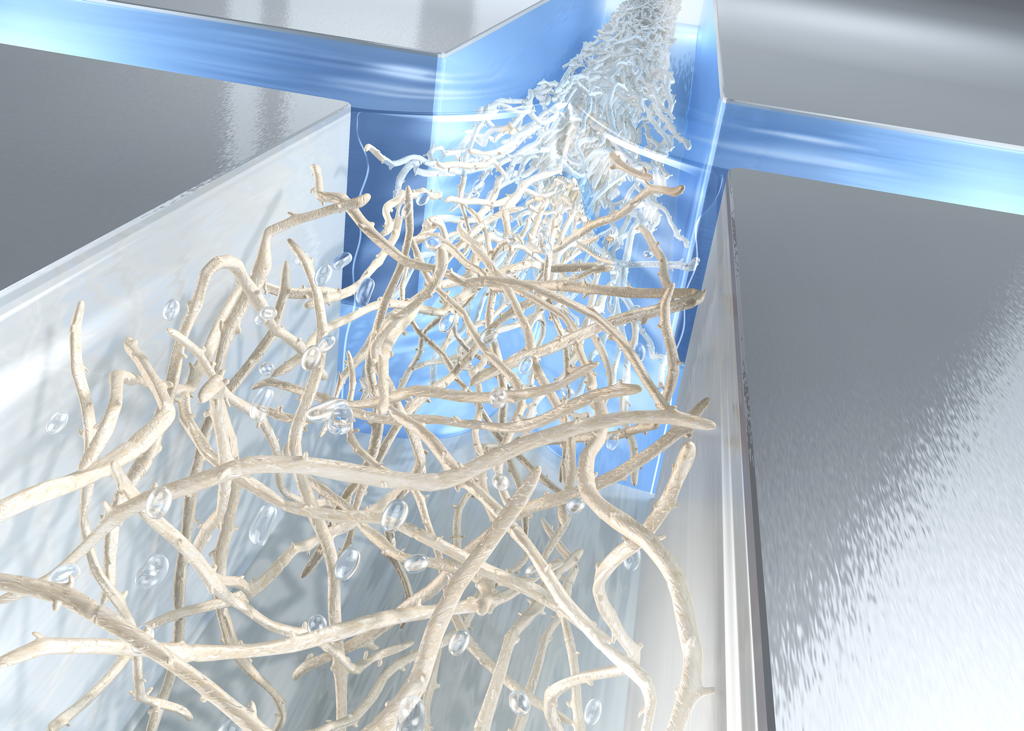Research and Development Funding for „Sunny Cellulose“
DESY, together with the Royal Institute of Technology in Stockholm receive a 30-month grant from the German Federal Ministry of the Interior, Construction and Home Affairs (BMI) for developing novel solar blinds. The trick: the team plans to spray newly developed polymer solar cells, onto a specially developed material made of nano-cellulose fibers. These cellulose fibers, developed at DESY’s PETRA III radiation lightsource, is the strongest biomaterial in the world – stronger than steel with a tensile strength like spider silk.
The team developed the material using the PETRA III X-ray light source at DESY: Using a special process called "hydrodynamic focusing", the scientists tightly packed the raw fibers that make up wood and plants, which are only 700 nanometers short and two to five nanometers thin, into longer and thicker fibers. They are held together by supramolecular forces, which include van der Waals forces. The scientists were able to observe how the fibers behave and are structured in detail with the bright X-ray light source, as if under a microscope, and were able to optimize the process. "In this way, we have produced threads up to 15 micrometers thick and several meters long," says Stephan Roth, head of the PETRA III beamline, where the threads were spun.
The German-Swedish team now aims to use these nature-based, artificially produced, ultra-strong nanofibers to produce a flexible fabric. One goal is to fast track development, so that this can be used as a plastic alternative in many areas: in cars, furniture or packaging. Even applications in biomedicine can be envisaged, as cellulose is not rejected by the body.
As a start in this project, the material will be formed into a sunshade that also produces electricity. To this end, the researchers want to weave a tarp about one square meter in size, onto which they will then apply a functionalized nanolayer of solar cells. The Project partner for "sunny cellulose" is the Bundesverband deutscher Gartenfreunde e.V. (Federal Association of German Garden Friends), in whose headquarters the novel high-tech blind will be used for the first time.
As the combination of the two materials, cellulose nanofibers and polymer solar cells is so far uncharted territory, lots of basic questions need to be answered before production. One challenge, for example, is to develop a production process based on green chemistry, possibly only using water while being as sustainable as possible. The product should ideally be easily recyclable. On the other hand, it must demonstrate high long-term stability against moisture.
The ultimate goal is to drive groundbreaking ideas for construction and architecture. The building methods of the future should be sustainable, resource-saving and cost-efficient. The "sunny cellulose" solar blind is addressing these goals.
(Edited on 12.12.2022)
published
- 2021/03/29
Press Contact
- innovation@desy.de


